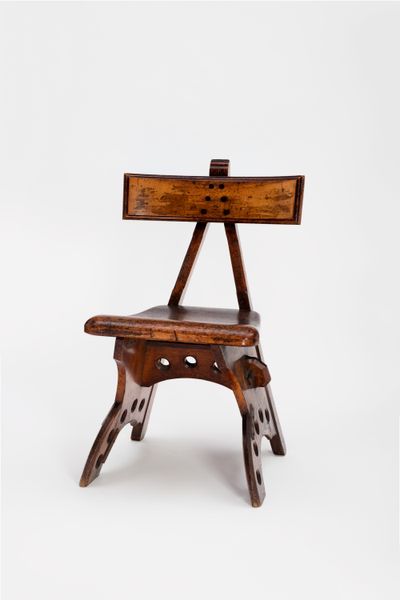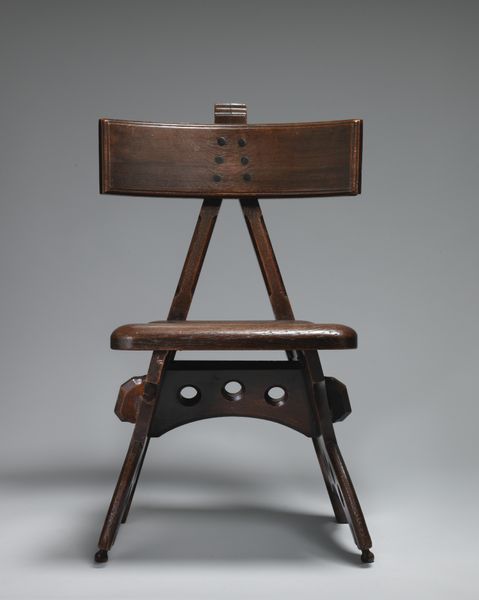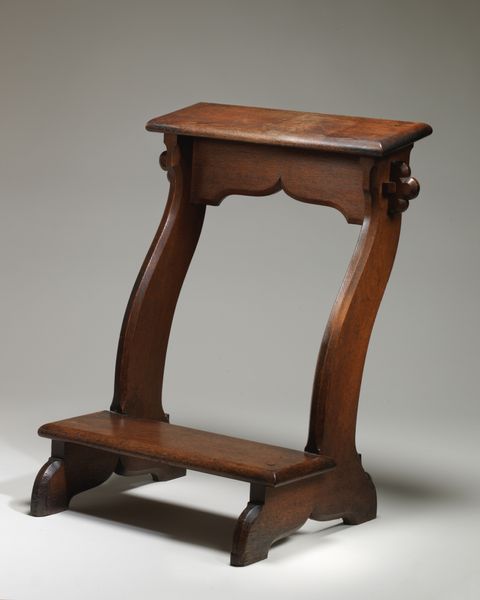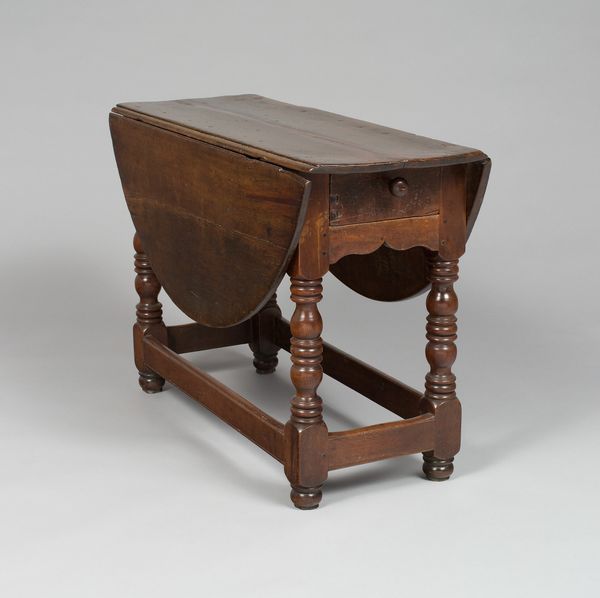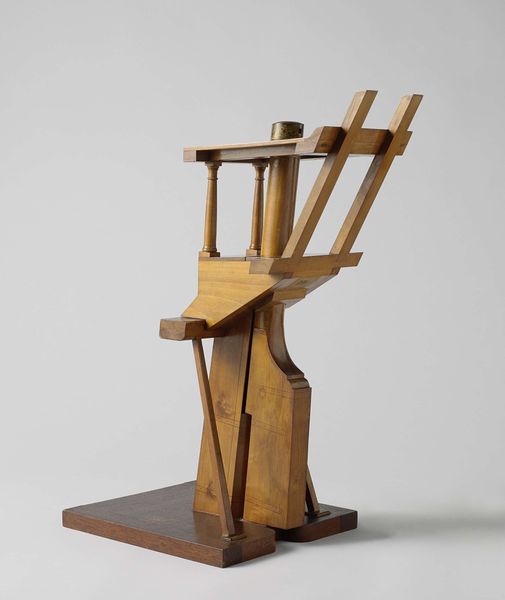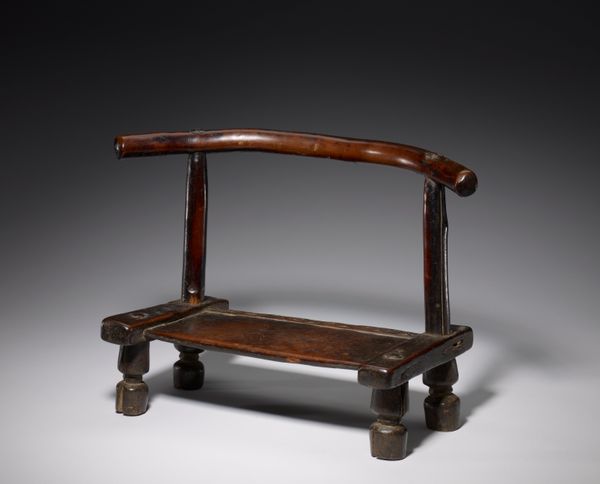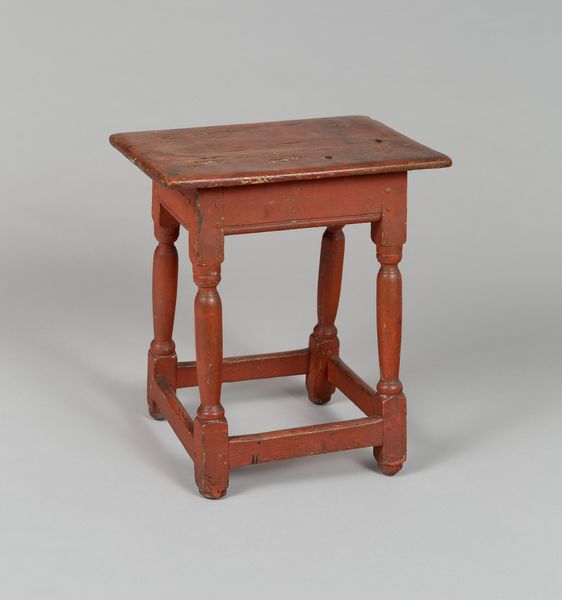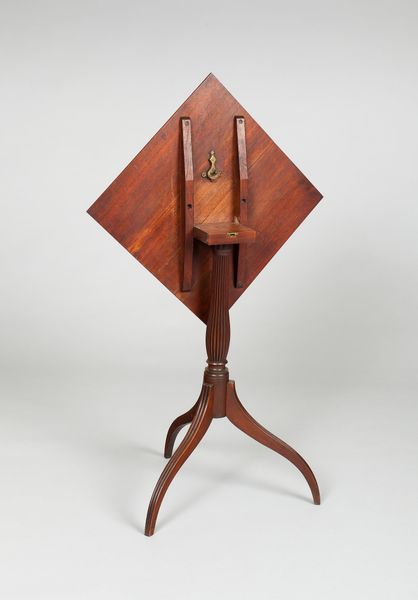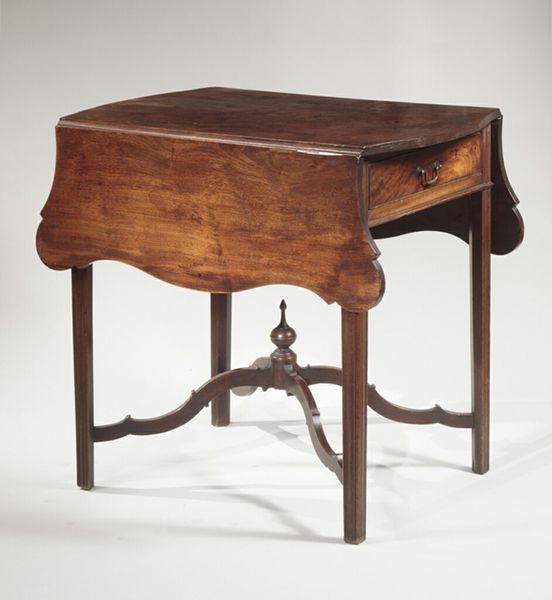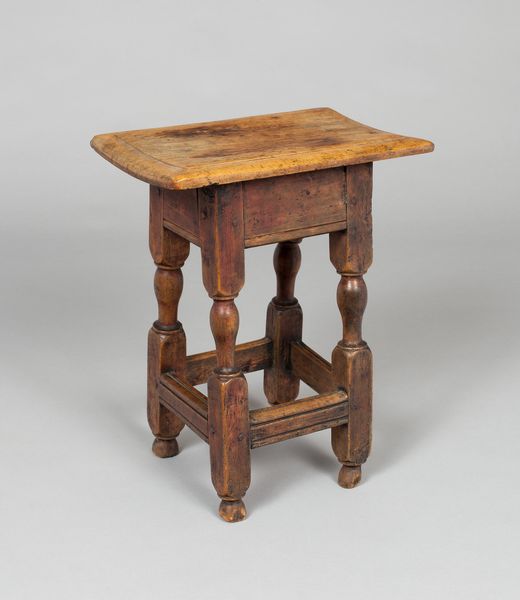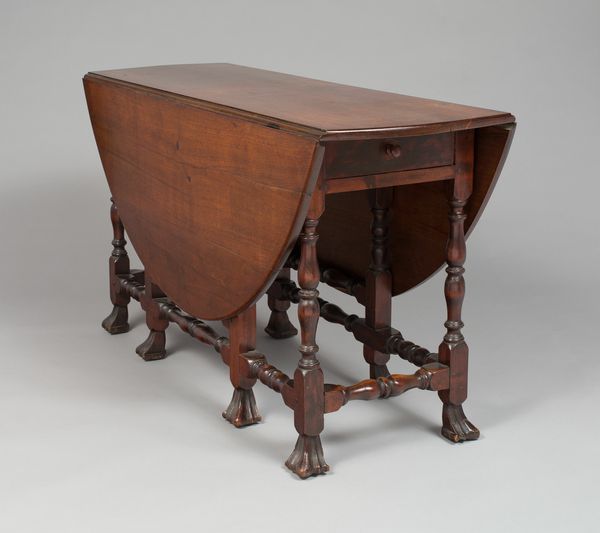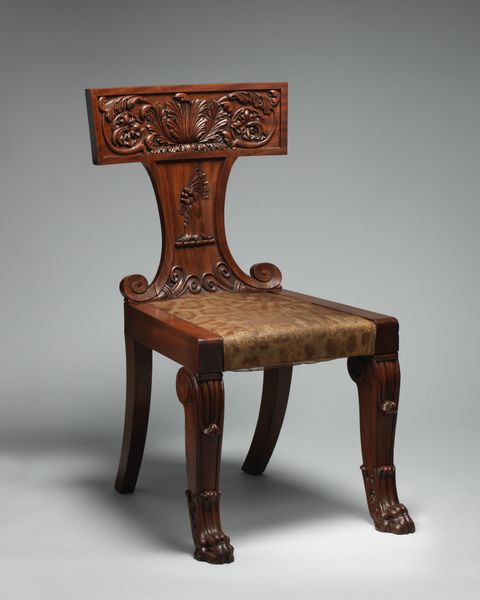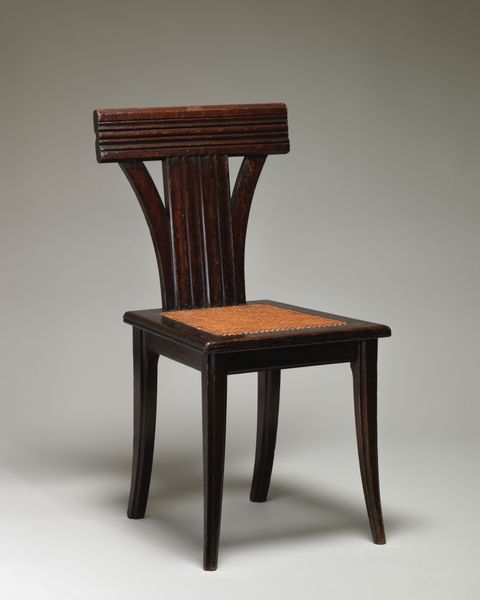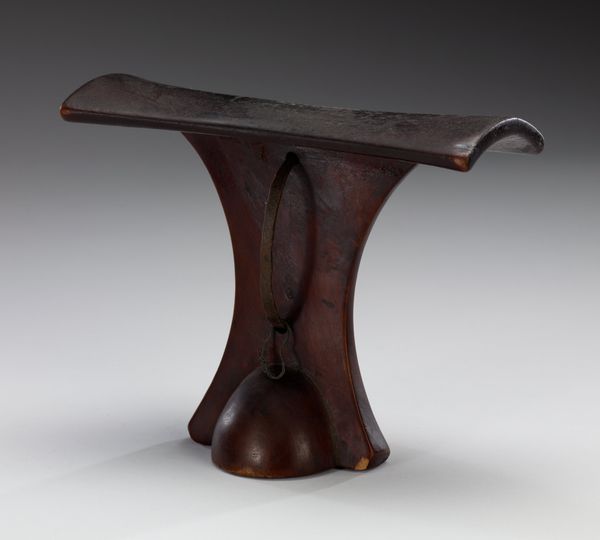
Dimensions: confirmed: 32 1/2 × 18 1/2 × 19 1/2 in. (82.6 × 47 × 49.5 cm)
Copyright: Public Domain
Editor: Here we have a "Side Chair" by Edward Welby Pugin, crafted sometime between 1865 and 1880. It's currently held at the Metropolitan Museum of Art. It's so interesting how a functional object like a chair can be considered art. It seems very sturdy and angular, with all those circular cutouts. What do you make of it? Curator: Immediately, I see the Arts and Crafts movement’s hand in this piece. It represents a return to handcrafted, honest design, a rejection of industrial mass production and Victorian excess. Do you see how the exposed joinery becomes a decorative element? The very structure becomes part of its symbolism. Editor: Yes, it's hard to miss those joints and pegs holding it all together! Almost like it's celebrating how it was built, rather than hiding it away. What’s the significance of that, do you think? Curator: It signals a renewed respect for the maker, and the making process. Consider how in previous eras, furniture might mimic classical forms or boast elaborate inlays. Here, the honesty of the material—wood—and its construction becomes paramount. What kind of cultural memory does a humble object like a chair evoke? Think about its place in domestic life, rituals, and the passing of time. Editor: So, it's about more than just having something to sit on. It's communicating a specific set of values tied to craft, simplicity and perhaps even a critique of industrial society at that time. Curator: Exactly. The chair becomes an icon. And consider the circular cutouts – do they suggest something beyond mere decoration to you? Perhaps a symbol of wholeness, the cycles of life. Think how this connects to similar motifs in other art forms of that period, like stained glass windows or manuscript illuminations. Editor: That's fascinating, I never would have considered that these little circles might point to anything deeper. I’ll definitely look at decorative art differently now! Curator: It’s a lesson in looking past the surface. Visual language shapes our perception even in the most mundane objects.
Comments
No comments
Be the first to comment and join the conversation on the ultimate creative platform.
